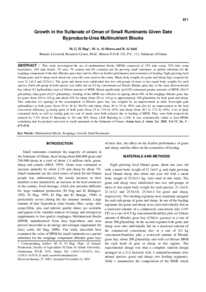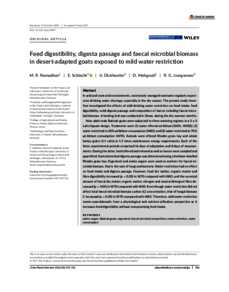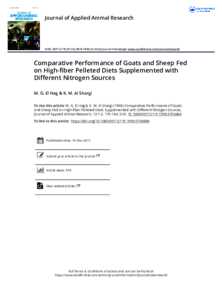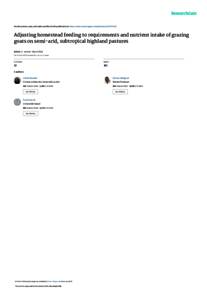Document
Growth in the Sultanate of Oman of small ruminants given date byproducts-urea multinutrient blocks.
Identifier
DOI: 10.5713/ajas.2002.671
Source
Asian-Australasian Journal of Animal Sciences. v. 15, 5, p. 671-674
Contributors
Al-Merza, M. A. , Author
Al-Salti, B. , Author
Country
Australia.
City
Melbourne
Publisher
Asian-Australasian Association of Animal Production Societies.
Gregorian
2002-05-01
Language
English
English abstract
This study investigated the use of multinutrient blocks (MNB) composed of 35% date syrup, 35% date syrup byproducts, 10% date fronds, 7% urea, 7% cement and 6% common salt for growing small ruminants, as partial substitute for the roughage component of the diet (Rhodes grass hay) and its effect on feedlot performance and economics of feeding. Eight growing local Omani goats and 8 sheep (each about one year old) were used in this study. Mean body weights for goats and sheep (kg), respectively were 21.1±4.5 and 25.5±4.1. The goats and sheep were subdivided into two sub-groups of more or less equal body weights for each species. Each sub-group in both species was either fed on 0.5 kg concentrate+ad libitum Rhodes grass hay or the same diet+restricted hay (about 0.2 kg/head/day) and ad libitum amount of MNB. Sheep significantly (p0.05) consumed greater amounts of MNB (36±17 g/head/day) than goats (6±2.5 g/head/day). Feeding of the MNB was effective in sparing about 40% of the roughage Rhodes grass hay for goats (from 240 to 140 g) and about 42% for sheep (from 252 to 146 g) or approximately 100 g/head/day for both goats and sheep. This reduction (or sparing) in the consumption of Rhodes grass hay was coupled by an improvement in daily liveweight gain (g/head/day) in both goats (from 29 to 46 by 58.6%) and sheep (from 26 to 39 by 50%) and also by an improvement in the feed conversion efficiency (g feed/g gain) of both goats (from 25 to 13.8 by 45%) and sheep (from 28.7 to 17.2 by 40%). Cost of daily consumed feeds as well as cost/kg gain (or cost of meat) were both reduced due to feeding of MNB. They were both respectively reduced by 7.5% (from 53 Baisa/day to 49) and 38% (from 1,828 Baisa/kg to 1,140). It was economically viable to feed MNBs containing date by-products and urea to small ruminants in the Sultanate of Oman.
ISSN
1011-2367
Resource URL
Category
Journal articles




